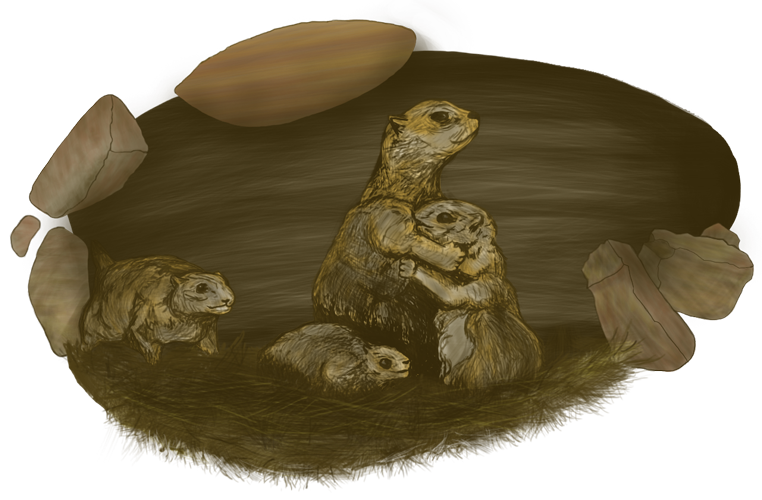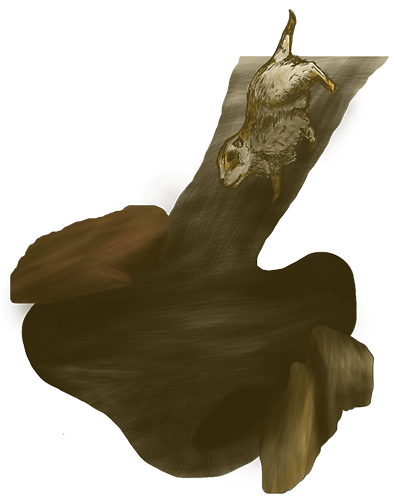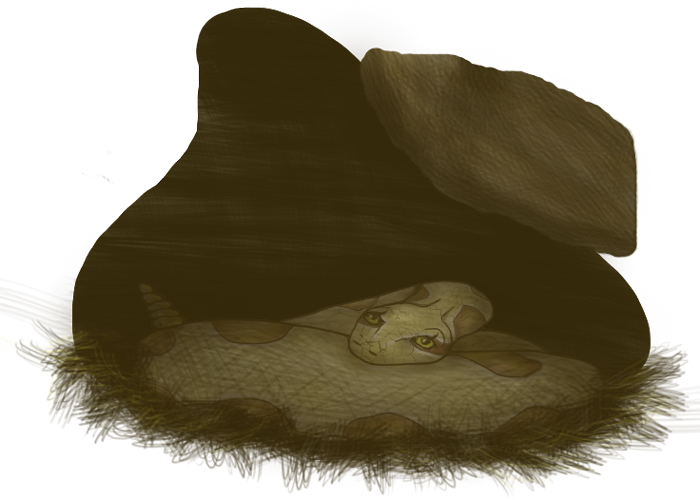Advocacy
Advocacy Overview
- Study Group scientist creates map of vegetation, wildlife corridors and habitat hotspots
- Instrumental in Land Development Code recognizing prairie dogs as “species of greatest conservation concern”
- Mapped Flagstaff prairie dog colonies at request of city staff
- Wildlife Reference Guide & Summary
- Working for Prairie Watchable Wildlife Site
- Commenting on Regional Transportation Plan

An important part of our mission is to advocate for the preservation of wildlife. Our Board members and our volunteers regularly attend meetings of the Flagstaff City Council, Coconino County Board of Supervisors, Flagstaff Open Spaces Commission, Citizens Advisory Committee for the revision of the Regional Plan, Focus Groups for the revision of the Land Development Code and Regional Plan, and Town Halls for the Regional Plan. We use these venues to voice concerns, provide information and stay informed about issues affecting wildlife.
Habitat Harmony was instrumental in prairie dogs being recognized as a ”species of greatest concern” in the revision of Flagstaff’s Land Development Code. The event that brought this to the attention of those revising the Land Development Code was Habitat Harmony’s participation in saving part of a prairie dog colony from destruction during the installation of a sewer and water line. Habitat Harmony worked successfully with city staff and the developer who recommended that prairie dog colonies be included in the planning process early enough to implement preservation measures.
As city staff and the Consultant for the Land Development Code worked to include concern for prairie dogs as a "species of greatest conservation need," they asked Habitat Harmony to provide a map of prairie dog colonies in the city. With input from County Environmental Health, NAU professors and students, and long-time Habitat Harmony volunteers, the map was created.
In addition to land development, transportation is a serious concern for prairie dogs. Habitat Harmony submitted comments on the Regional Transportation Plan passed by the Flagstaff Metropolitan Planning Organization. Important issues addressed included:
- requiring that the Transportation Plan be subject to the new Regional Plan which will not be in effect until 2012
- objection to bypasses which would have a negative impact on wildlife corridors and wetlands
- support for a Conservation Lands System, Best Management Practices, and the need for a city staff biologist.
Working for Watchable Wildlife

Working for Watchable Wildlife
Trails with interpretive signs
Blinds suitable for nature photography
Guided walking tours
Education center
Watchable Wildlife recreation Vision
Habitat Harmony has worked with Northern Arizona University (“N.A.U.”) and Dr. Con Slobodchikoff to install a nature trail with interpretive signs through the prairie dog colony just west of the Coconino County Humane Society in 2000-2001, funded by a Heritage Fund Grant. This is the site that we propose for Flagstaff’s first prairie watchable wildlife site featuring the prairie ecosystem of northern Arizona. Prairie dogs are ideal for watching because they are social animals whose antics are entertaining. Gunnison’s prairie dogs have been noted for their frequent and diverse vocalizations. They are active during the day and much of their activity is above ground. Many other species are present at the proposed site, including coyotes, foxes, red-tailed hawks, golden eagles, ravens, weasels, skunks, golden mantled ground squirrels, spotted ground squirrels, rock squirrels, mule deer, elk, an occasional badger and a number of arthropod species.

The area adjacent to the Coconino County Humane Society is well suited for watching wildlife. It is within the city limits on the Flagstaff Urban Trail and close to Foxglen Park, which draws many residents to the area. It has an Open Space monument marker. The area is undeveloped, except for a walking path and interpretive signs portraying the lives of prairie dogs (their social system, territories, burrows, basic behavior) and also a few of their predators, as well as some of the animals that use the plants at prairie dog towns for forage, such as pronghorn antelope.
This project would be Flagstaff’s first prairie ecosystem watchable wildlife site. It would provide recreational and educational opportunities that highlight the unique wildlife and terrain of the area, for Flagstaff residents as well as visitors. It could serve as a tourist attraction and possibly generate money for our community. Science would also benefit from an urban area that is preserved as habitat for local plant and animal species. This site is where Dr. Con Slobodchikoff conducted some of his groundbreaking research on the communication skills of Gunnison’s prairie dogs and it could serve both N.A.U. and the greater community as a site for future scientific research.

Habitat Harmony has submitted a request to the revised Regional Plan for a policy under Wildlife in the Environment and Conservation Element that calls for the creation of a coalition of government and private groups to implement Arizona Game & Fish’s Watchable Wildlife Recreation Vision for the Flagstaff area. The prairie dog colony at Foxglenn is one of the watchable wildlife areas suggested in the Vision.
We want future generations to have the opportunity to observe wildlife in its native setting–
an opportunity we so often take for granted!

Adovcating to Protect Observatory Mesa
Recently Habitat Harmony advocated for the protection of Observatory Mesa. Below you can read the letter they provided the Coconino County government as well as view a fact sheet (download) about Observatory Mesa.
Dear Commissioner Hickman,
We are writing on behalf of Habitat Harmony, Inc., to encourage you to approve Coconino County’s request to reclassify State Trust lands (Sections 6, 8, 12, 18, and 19) on Observatory Mesa near Flagstaff as suitable for conservation purposes under the Arizona Preserve Initiative Petition 35-116166. Our group supports this reclassification because it fits with our mission of promoting protection of wildlife habitat and open space in northern Arizona. Protecting these particular parcels also helps secure night-time public viewing and future astronomical research opportunities at Lowell Observatory by limiting proximate light pollution.
In 1998, the Flagstaff Open Space and Greenways Plan identified state trust (and other) lands on Observatory Mesa as priority areas for retention due to open space and resource values. These particular parcels include diverse landscapes and habitats, which provide year-round habitat and migratory corridors for large mammals including mule deer, elk, mountain lion, black bear, and pronghorn. The habitat may also be suitable for sensitive species such as northern goshawk, Mexican spotted owl, and Gunnison’s prairie dog. Suitable habitat also exists for a diversity of reptiles and amphibians, including plateau fence lizard, tree lizard, greater short-horned lizard, many-lined skink, Madrean alligator lizard, western terrestrial gartersnake, gophersnake, Sonoran mountain kingsnake, Arizona black rattlesnake, boreal chorus frog, Arizona mountain treefrog, and tiger salamander.
A Message to Humans

"I used to be a city fellow. I grew up with the city noises of cars and trains and machines and humans. My family lived close to downtown Flagstaff not far from the railroad tracks along Route 66. What a busy, frightening place it was."
Read My Letter to You












